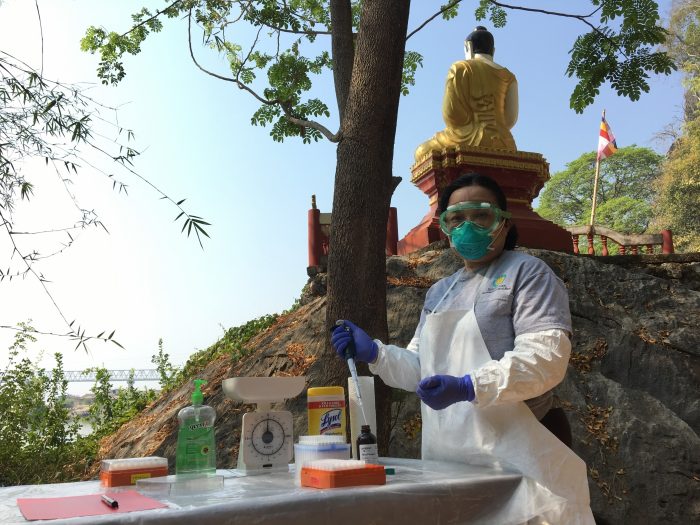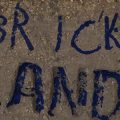Pandemic Response: Then and Now
“There is little danger that Washington, with its high degree of wholesomeness, will be the scene of a serious outbreak of the disease,” D.C.’s Health Officer, Dr. Fowler, told the Washington Evening Star on September 29, 1918.
Wholesomeness notwithstanding, it didn’t take long for the Spanish Flu to prove Fowler wrong. Three days later, as the disease raged across the country, schools across the District closed, soon followed by churches, theaters, and a cancellation of all public gatherings.
On October 5, the U.S. National Museum (now the Arts & Industries Building) instituted strict sanitization measures. Buildings were to be ventilated before any employees arrived in the morning and twice throughout the day. Telephone transmitters were disinfected twice during the day. Employees who had public contact wore gauze masks covering the nose and mouth.
In our current moment of pandemic, I cannot help but think of the past disasters that we have weathered in our 175 years. A Civil War and two World Wars; epidemics of Spanish Flu, Typhoid, Cholera, and AIDS. In each of these moments, our community rose to the occasion to do what we have always done: to serve our public.
I hear the words “historic moment” thrown around a lot these days. And while our experiences today are in many ways deeply unprecedented, these past moments of upheaval echo around my historian’s brain. Their legacy informs our work today, just as surely as the choices we make in the coming weeks will shape the future of our field and our country.

During World War I, more people died from the influenza pandemic (estimated 50 million–100 million) than from the war (estimated 17 million). Over half of the deaths from the pandemic virus were adults between the ages of 20 and 40, rather than the young children and elderly who typically die from the flu. Hospitals were quickly overwhelmed by the number of people sick from the flu and the secondary pneumonia cases that followed. Temporary, often overcrowded, infirmaries were created in auditoriums and public buildings to care for the sick. This photo of flu victims during World War I is on display in the exhibition, “Outbreak: Epidemics in a Connected World,” at the Smithsonian’s National Museum of Natural History through 2021. (Photo courtesy U.S. National Library of Medicine)
While the Spanish Flu may have caught the city flat-footed, the Smithsonian’s involvement in crisis prevention and response has historically been proactive. The first event held at the “new” US National Museum (now NMNH) was the International Congress on Tuberculosis. During World War II, Smithsonian curators identified fleas, ticks, mosquitoes, and other vectors that might carry disease in all the war’s theaters. Staff trained medical corps before they were sent overseas on how to identify these vectors.
Such work is matched by the Smithsonian’s research and outreach efforts today. NMNH’s Outbreak exhibition, for instance, makes the data accessible and prepares audiences to take action. Or the Smithsonian Global Health program that works to identify viruses before they become threats.
Of course, COVID-19 has made all too apparent that fighting a pandemic takes more than science. The Smithsonian and other cultural institutions have a responsibility to combat what I have been thinking of as a dual pandemic. We begin the fight by working to gather information and equip the public with knowledge. As we do so, we must also fight the fear and blame that accompany any moment of crisis. We must be a voice of hope and encouragement, reminding Americans to keep courage and faith.
In the late 80s, as the AIDS epidemic ravaged the country and carried with it the stigmas and myths of prejudice, the Office of Protection Service expanded the Occupational Health Program by creating an HIV-positive support group as part of their employee wellness activities. In 1994, the Anacostia Community Museum launched an education outreach program called “Positive: HIV and AIDS in Washington’s African American Community.”

As a leader in conservation research, Smithsonian researchers have worked closely with Myanmar’s Ministry of Natural Resources and Environmental Conservation for more than 20 years and continue to achieve effective conservation and management through research and training.
Among the Smithsonian’s many conservation and scientific activities in Myanmar, the Global Health Program is dedicated to conservation medicine, disease prevention, and the overlap between animal, human, and ecological health. As a part of these goals, GHP has partnered with two additional Myanmar ministries — the Ministry of Health and Sports, and the Ministry of Agriculture, Livestock and Irrigation — to implement USAID’s PREDICT project and advance the One Health initiative in this country.
Throughout the Smithsonian’s history, this too has been a hallmark of our service to a nation in periods of crisis. Combatting stigma with information; combatting isolation with community; combatting fear with hope.
Even with our doors closed, museums have the power to bring people together. We continue to be sources of support, hubs of knowledge, and beacons of hope. That is why I am so proud of our efforts today. Providing high quality and accessible resources to students and educators. Sharing expertise through video and online programming. And when all else fails, administering a healthy dose of positivity.
Of course, our digital resources offer platforms for engagement and connection that our predecessors did not have. But although our opportunities to serve have evolved and expanded, we continue to do what we have done for nearly 175 years. We provide context, insight, and expertise that the public can trust. And we provide the hope, support, and comfort that we all need.
This piece is based on research by Pam Henson, Historian at Smithsonian Archives, and Professor Howard Markel of University of Michigan.
Posted: 20 May 2020







